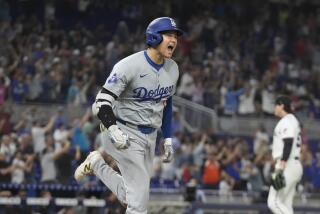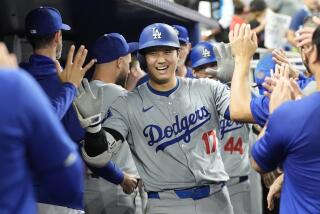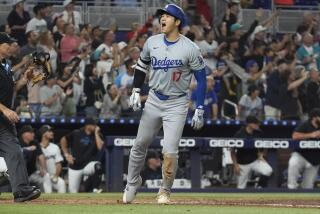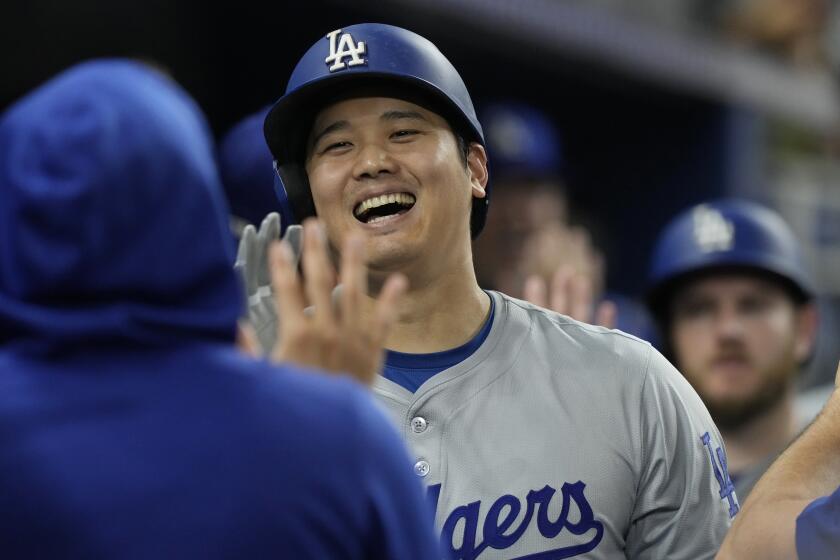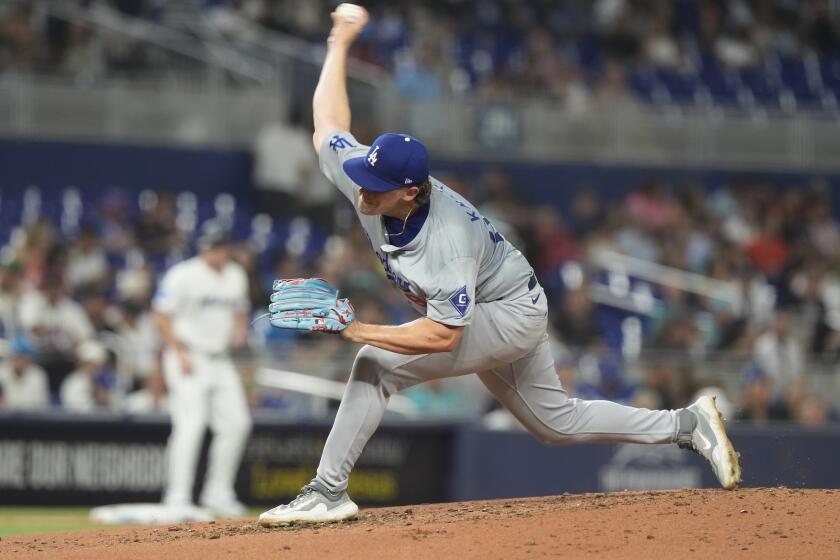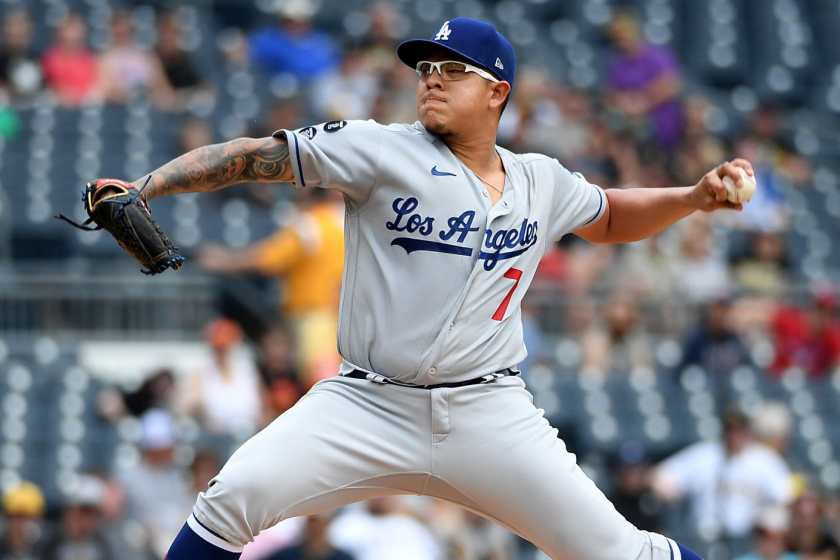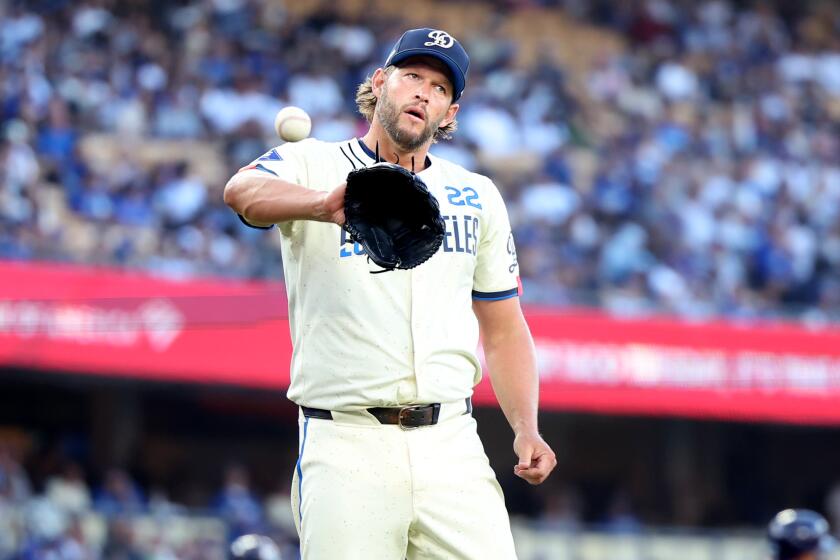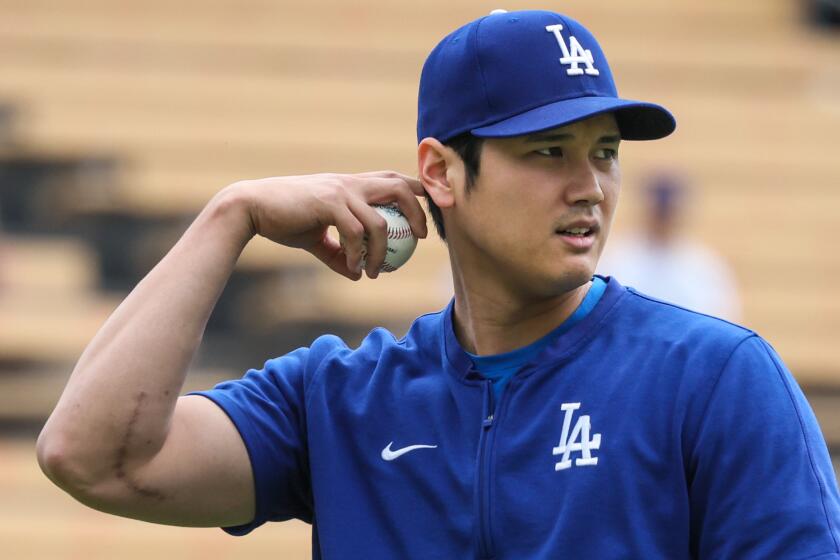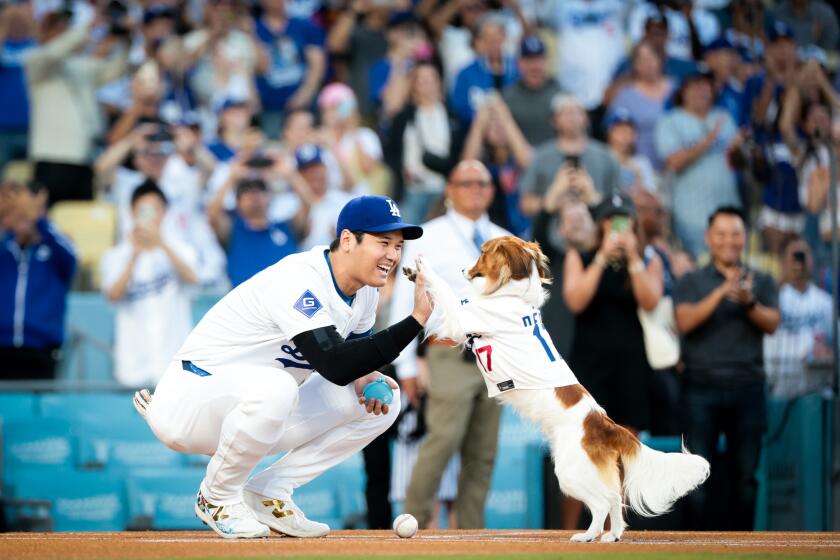Column: Julio Urias in October? Dodgers might have to start prized rookie

Dodgers rookie Julio Urias catches his breath while pitching against the Yankees in New York on Sept. 13.
Julio Urias reflected on where he was four months ago, where he is now, and smiled.
“It feels closer, no?” he said in Spanish.
He was talking about the possibility of being part of the Dodgers’ postseason rotation, something that was farfetched when he was first promoted to the major leagues.
Urias will start Thursday against the San Diego Padres, who defeated the Dodgers, 6-5, on Wednesday. His performance could determine how and when he will be deployed in October by Manager Dave Roberts.
“This will be a very important day for me,” said Urias, who turned 20 last month.
As much as Urias is looking forward to opportunity, this wasn’t what the Dodgers wanted.
While the front office’s inability to construct a sturdy rotation didn’t prevent the team from claiming its fourth consecutive National League West championship, it has placed the franchise’s future ace in a potential perilous situation.
Brandon McCarthy doesn’t look ready to compete next month. Brett Anderson and Scott Kazmir don’t, either.
That means that if Clayton Kershaw can’t pitch on three days’ rest against the Washington Nationals in their National League division series, the Dodgers could be forced to turn to the youngest player on their roster to start Game 4.
Already, Urias has pitched 119 innings this season between the major and the minor leagues, up from 801/3 last year and 872/3 in 2014. Urias’ agent, Scott Boras, said he wanted to limit the increase in Urias’ workload to somewhere in the 30- to 40-innings range.
But if the Band-Aid Bunch in the rotation is responsible for creating this dilemma, Urias has contributed to it too.
Over his last six starts, Urias has posted a 1.50 earned-run average. Urias’ season earned-run average, which was at 9.39 through two starts, is down to 3.53.
He isn’t the same tentative teenager he was four months back, when he was rocked by the New York Mets in his first major league game.
His curveball has considerably more depth, the result of a new grip taught to him by pitching coach Rick Honeycutt.
“I used to throw one that was like a ‘slurve,’” he said, using what is often a derisive term to describe a curveball that breaks laterally more than it does vertically.
Urias also added a high fastball to his arsenal after Boras showed him statistics on how the pitch could be used effectively in the major leagues. The pitch is seldom used in the minors, where most hitters are short on bat speed and won’t try to hit it.
In both instances, Urias asked Kershaw for advice.
“I talk to him more about mentality than anything,” Kershaw said. “I think at times he was a little passive starting the games, trying to ease into it, just kind of flipping his breaking ball in there as opposed to really breaking it off and throwing it hard. I think once he’s full-go from the beginning, like he has been these last whatever amount of starts, you’ll notice a big difference.”
This was particularly true of the high fastball.
“The high fastball is a great pitch, but not when you aim it,” Kershaw said. “The high fastball is a great pitch when you have the mentality like, ‘I’m going to throw it as hard as I can at the guy’s belt and if I throw it down the middle at least I threw it as hard as I could,’ as opposed to, ‘I have to throw it perfect.’”
Urias has won his last five decisions and his record is 5-2. He has struck out 79 batters in 74 innings.
The Dodgers have limited him to 11 innings over the last 41/2 weeks and two innings over the last two weeks, which leads them to believe they can use him in October without doing any harm to him.
Boras sympathized with the team’s position.
“These are difficult situations for a club,” he said.
Boras praised the Dodgers for how they have taken care of Urias up to this point and said he still wasn’t alarmed by the possibilty of his client pitching into October.
“We’ve got some innings to play with before it becomes a real concern,” Boras said.
As Boras spoke of Urias’ situation, however, he mentioned another of his clients who was in a similar predicament last season, Matt Harvey of the New York Mets. While leading the Mets to the World Series, Harvey pitched far beyond the innings limit that was outlined by Boras. Harvey underwent surgery this year to remedy a nerve-related problem.
Asked if he thought a stress-free September could allow Urias to pitch late into next month, Boras replied, “With Matt Harvey, we did something similar and you saw the results.”
Would Boras have a problem if the Dodgers advanced to the World Series and continued to start Urias?
Boras said he wouldn’t comment until he received a medical opinion from Dodgers physician Neal ElAttrache.
The agent said this probably won’t be the last time the Dodgers encounter this kind of problem.
“This is something we will have to deal with the year after, the year after that and the year after that,” Boras said.
Naturally, Urias doesn’t share the concerns of his agent or his team.
“Who doesn’t want to pitch in the playoffs in their first year in the major leagues?” he asked. “My arm feels good. My legs feel strong. My back feels good. I’m prepared to do whatever the team asks me.”
dylan.hernandez@latimes.com
Twitter: @dylanohernandez
More to Read
Are you a true-blue fan?
Get our Dodgers Dugout newsletter for insights, news and much more.
You may occasionally receive promotional content from the Los Angeles Times.
